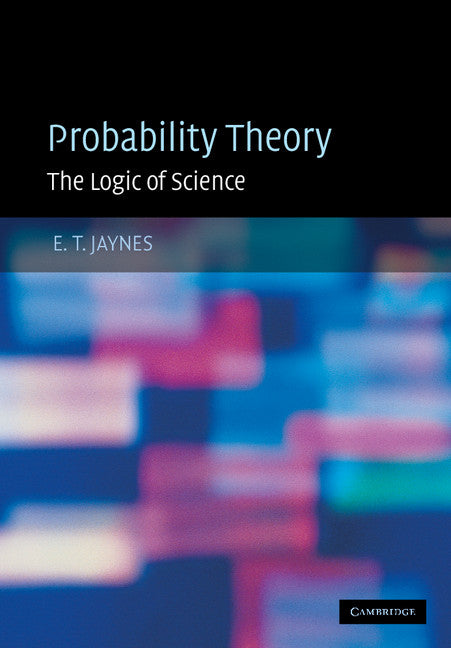Freshly Printed - allow 4 days lead
Couldn't load pickup availability
Probability Theory
The Logic of Science
New and original interpretation of probability theory, with applications to a wide range of subjects.
E. T. Jaynes (Author), G. Larry Bretthorst (Edited by)
9780521592710, Cambridge University Press
Hardback, published 10 April 2003
753 pages
25.6 x 18 x 3.9 cm, 1.64 kg
'… the author thinks for himself … and writes in a lively way about all sorts of things. It is worth dipping into it if only for vivid expressions of opinion. The annotated References and Bibliography are particularly good for this.' Notices of the American Mathematical Society
The standard rules of probability can be interpreted as uniquely valid principles in logic. In this book, E. T. Jaynes dispels the imaginary distinction between 'probability theory' and 'statistical inference', leaving a logical unity and simplicity, which provides greater technical power and flexibility in applications. This book goes beyond the conventional mathematics of probability theory, viewing the subject in a wider context. New results are discussed, along with applications of probability theory to a wide variety of problems in physics, mathematics, economics, chemistry and biology. It contains many exercises and problems, and is suitable for use as a textbook on graduate level courses involving data analysis. The material is aimed at readers who are already familiar with applied mathematics at an advanced undergraduate level or higher. The book will be of interest to scientists working in any area where inference from incomplete information is necessary.
Foreword
Preface
Part I. Principles and Elementary Applications: 1. Plausible reasoning
2. The quantitative rules
3. Elementary sampling theory
4. Elementary hypothesis testing
5. Queer uses for probability theory
6. Elementary parameter estimation
7. The central, Gaussian or normal distribution
8. Sufficiency, ancillarity, and all that
9. Repetitive experiments, probability and frequency
10. Physics of 'random experiments'
Part II. Advanced Applications: 11. Discrete prior probabilities, the entropy principle
12. Ignorance priors and transformation groups
13. Decision theory: historical background
14. Simple applications of decision theory
15. Paradoxes of probability theory
16. Orthodox methods: historical background
17. Principles and pathology of orthodox statistics
18. The Ap distribution and rule of succession
19. Physical measurements
20. Model comparison
21. Outliers and robustness
22. Introduction to communication theory
References
Appendix A. Other approaches to probability theory
Appendix B. Mathematical formalities and style
Appendix C. Convolutions and cumulants.
Subject Areas: Maths for engineers [TBJ], Physics [PH], Maths for scientists [PDE], Probability & statistics [PBT]


